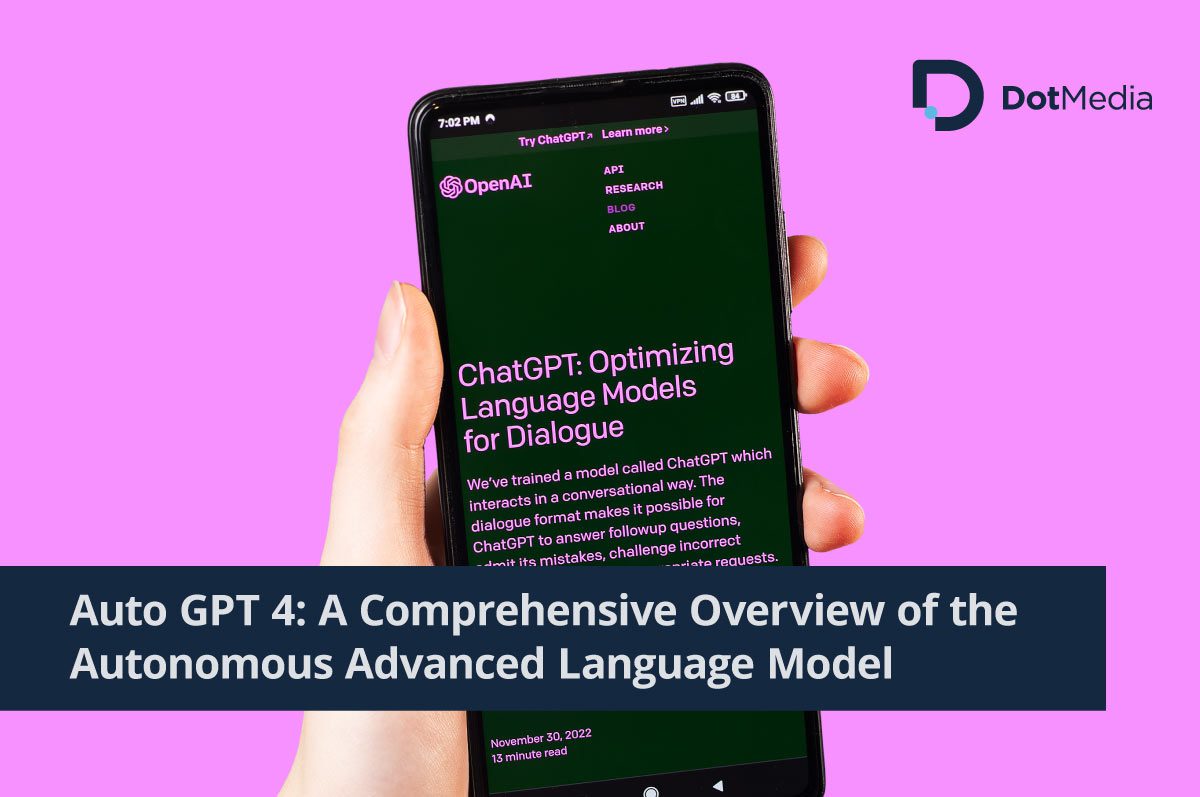Auto GPT 4: Overview of the Autonomous Advanced Language Model
The world of artificial intelligence and natural language processing (NLP) has witnessed remarkable advancements in recent years, with one of the most notable being the generative pre-trained transformer models (GPT) developed by OpenAI. GPT-4, the latest in this series of models, has garnered significant attention for its human-like text generation capabilities. This article provides an in-depth exploration of the Autonomous GPT-4 tool, its applications, and its potential impact on various industries.
Evolution of GPT Models
The development of GPT models began with the release of GPT in 2018, followed by GPT-2 and GPT-3 in 2019 and 2020, respectively. Each successive model demonstrated improvements in text generation capabilities, the ability to understand context, and overall performance.
GPT-4, the most advanced version to date, continues this trend of progress by offering even greater understanding of context and providing more refined text generation. This model’s enhanced performance is attributed to a larger dataset, more sophisticated algorithms, and the application of cutting-edge research in NLP and machine learning.
Understanding Autonomous GPT 4
The term “Auto GPT 4 ” refers to the integration of GPT 4’s advanced capabilities with automation technologies. This fusion allows the model to perform tasks independently and more efficiently, reducing the need for human intervention. By leveraging the power of GPT-4, autonomous applications can generate high-quality content and provide valuable insights across various industries.
How Autonomous GPT 4 Works
At its core, GPT 4 is a transformer-based model that relies on deep learning techniques and unsupervised learning methods. The model is pre-trained on vast amounts of text data, enabling it to recognise patterns and generate text based on a given context or prompt. The fine-tuning of GPT-4 for specific tasks is achieved by training the model on additional datasets that cater to the targeted application.
Auto GPT 4 employs advanced algorithms that enable it to operate with minimal human intervention. It can analyse input data, understand the context, and produce output tailored to the specific requirements of the task. This high level of autonomy allows for more efficient and scalable applications across various domains.
Applications of Auto GPT 4
Auto GPT 4 has a wide range of applications in multiple industries, some of which include:
- Content Creation: The model can generate high-quality, human-like text for various purposes, such as blog posts, social media updates, and news articles.
- Text Summarisation: By extracting key points and summarising lengthy documents, GPT-4 can save time and effort for researchers, students, and professionals.
- Translation: The model’s advanced language understanding capabilities make it suitable for translating text between multiple languages with high accuracy.
- Chatbots and Virtual Assistants: GPT-4 can be used to create more natural and engaging conversational agents that understand user intent and provide helpful responses.
- Sentiment Analysis: Businesses can leverage GPT-4’s understanding of context and sentiment to analyse customer feedback and improve their products and services.
- Natural Language Interfaces: By incorporating GPT-4, applications can understand and process natural language queries, making them more accessible and user-friendly.
Benefits of Auto GPT 4
The integration of GPT-4 with automation technologies offers numerous benefits, such as:
- Enhanced Efficiency: By reducing the need for human intervention, autonomous applications can perform tasks faster and more accurately.
- Scalability: The autonomous nature of GPT-4 allows it to handle large volumes of data and requests, making it suitable for various applications and industries.
- Cost Reduction:
The rapid advancements in artificial intelligence (AI) and natural language processing (NLP) have led to the development of groundbreaking technologies such as Autonomous GPT-4 and BabyAGI. These autonomous agents are transforming the way AI is accessed and utilised across various industries. This article delves into the intricacies of these innovative tools, their applications, and their potential impact on the future of AI.
The Emergence of Autonomous Agents
Autonomous agents are AI systems that can independently perform tasks with minimal human intervention. The fusion of automation technologies with AI models like GPT-4 has given birth to powerful tools capable of delivering high-quality results in various applications. The combination of advanced algorithms and cutting-edge research in NLP and machine learning enables these autonomous agents to understand context, learn from input data, and produce tailored outputs.
Autonomous Auto GPT 4 : An In-Depth Look
As discussed earlier, Autonomous GPT-4 is an advanced language model that integrates GPT-4’s capabilities with automation technologies. This potent combination allows the model to perform tasks independently, efficiently, and with minimal human input. Applications of Autonomous GPT-4 span across content creation, text summarisation, translation, chatbots and virtual assistants, sentiment analysis, and natural language interfaces.
Introducing BabyAGI
BabyAGI is another groundbreaking autonomous agent that aims to bring generative AI to a wider audience. Developed by OpenAI, BabyAGI is designed to learn from its environment and perform tasks with minimal supervision. The model is based on reinforcement learning and boasts an advanced architecture that allows it to adapt and evolve based on the tasks it encounters.
Applications of BabyAGI
Like Autonomous GPT-4, BabyAGI has a vast range of applications in various industries. Some noteworthy use cases include:
- Problem Solving: BabyAGI can analyse complex scenarios, identify potential solutions, and optimise processes in different domains.
- Creative Design: The model can be used to generate innovative designs for products, architectural structures, and artistic creations.
- Gaming: BabyAGI can be employed as an intelligent opponent or a dynamic game environment, enhancing the gaming experience.
- Healthcare: The model can aid in diagnosing diseases, planning treatment strategies, and optimising healthcare management.
Democratising AI Access
Autonomous GPT-4 and BabyAGI are transforming the AI landscape by making advanced AI capabilities accessible to a broader audience. By lowering the barriers to entry, these tools empower businesses, researchers, and individuals to harness the power of AI without requiring extensive technical expertise or resources. This democratisation of AI has the potential to drive innovation and growth across numerous industries.
Ethical Considerations and Challenges
Despite the immense potential of autonomous agents like Autonomous GPT-4 and BabyAGI, they also present several ethical and technical challenges. Concerns about privacy, data security, and the potential misuse of AI-generated content must be addressed. Additionally, the development of robust AI systems requires extensive computing resources, raising questions about environmental sustainability.
Developers, policymakers, and researchers must work together to establish guidelines and best practices for the responsible development and deployment of these technologies. By addressing these challenges, the AI community can ensure that autonomous agents contribute positively to society and foster a bright future for AI-driven innovation.
The development of autonomous agents like Autonomous GPT-4 and BabyAGI marks a significant milestone in the evolution of AI and NLP. By democratising access to advanced AI capabilities, these tools have the potential to revolutionise various industries, drive innovation, and empower individuals and businesses alike. As we move forward, it is crucial to address the ethical and technical challenges associated with





